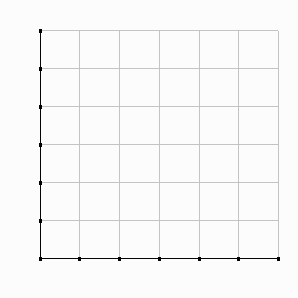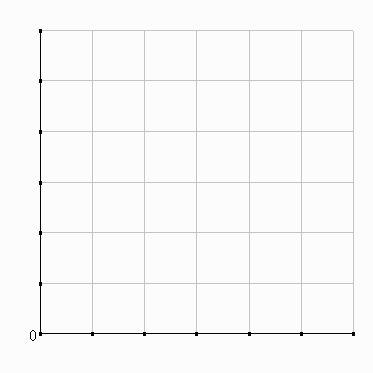|
Qd = a - bP => dQd/dP = -b => (dropping the sign on b)
|
 |
|
Friday, February 01, 2013 |
I. Review of markets
B. Elasticity (finish)
Example 1: Linear demand
Geometry and calculations (Excel)
|
Qd = a - bP => dQd/dP = -b => (dropping the sign on b)
|
 |
So note that a linear demand curve contains all the
possible elasticity values:
(1) elasticity drops continuously from infinity to 0 as you move down
the demand curve.
(2) elasticity switches from elastic to inelastic exactly halfway down. That
means that lower prices keeps raising P·Q until the midpoint; after that, P·Q starts to
fall again. So for a linear demand curve, TR and TE are maximized at the midpoint price
and quantity.)
Example
2: Power-function demand
Constant elasticity of demand function
| (1) Qd = aPb
with a>0
and b<0 dQd/dP = b·aP(b-1) = b·aPb·P-1 = b·aPb/P => (2) dQd/dP = b·Qd/P (using (1) to substitute for the numerator) e = dQd/dP x P/Qd => End result: e = b (a constant, the exponent on P) |
 |
So note that for a power function demand:
(1) elasticity = the exponent on P (true for every other
variable that you add to the function).
(2) elasticity remains constant everywhere along the demand
curve
2. How own-price elasticity (e) relates to total expenditure (TE)
| TE | = | P | · | Q | |
| DP>0 | => | DQ<0 | |||
| by the law of demand | |||||
| DTE=? |
--depends on which effect wins |
||||
P and Q move in opposite directions when we move along D, so which effect wins?
e tells us which direction TE moves when price changes.
| Product | Elasticity %DQ/%DP |
%DQd vs. %DP | Type of elasticity | |
| (1) | Milk | 0.5 | %DQd < %DP | inelastic: e<1 |
| (2) | Movie tickets | 2.2 | %DQd > %DP | elastic: e>1 |
| (3) | Baseball tickets | 1.0 | %DQd = %DP | unit elastic: e=1 |
Rules:
(1) |e| < 1: inelastic: P and TE move in the same direction
(2) |e| > 1: elastic: P and TE move in opposite directions
(3) |e| = 1: unit elastic: TE is constant as P changes
? What would your advice be if the theater owner wants to raise total revenue?
Applying price elasticity
See Elasticity Examples worksheet
II. Consumer demand
Goal: to investigate more closely what makes
consumers tick
--what influences their decisions
--what policies we might use and the effects of those policies
We will now switch from what we call partial equilibrium to general equilibrium analysis
Partial equilibrium
analysis: studies individual markets in isolation
Uses S&D diagrams
General equilibrium
analysis: studies how markets are linked together
Uses diagrams which look at more than 1 item at
a time
Example: Production possibilities
frontier (PPF)
We'll introduce new tools for analyzing consumer
behavior:
budget lines and indifference curves.
A. The rational consumer
--Basic setup
A consumption set is made up of all possible consumption bundles.
| How the
consumption set looks: Graph 2 points for 2 goods (R,C) |

|
| Consumer optimization | ||
| consumers try to maximize their utility (U) | max U(X,Y,Z,...) | |
| subject to their budget constraint | subject to I = PxX + PyY + PzZ + ... | |
Ex: U = U(Rum,Coke)
Total utility = total consumer satisfaction
or "psychic glow"
Cardinal utility => consumers can measure their satisfaction
level from their consumption units
Ex: "utils" from early economist
Jeremy Bentham
Makes interpersonal comparisons
possible
Ordinal utility
=> consumers can rank their consumption bundles
Ex: "Are you better off now than you
were 4 years ago?"
Interpersonal comparisons aren't
possible
We'll consider the budget constraint first, then their utility, and then how the two get combined in utility maximization